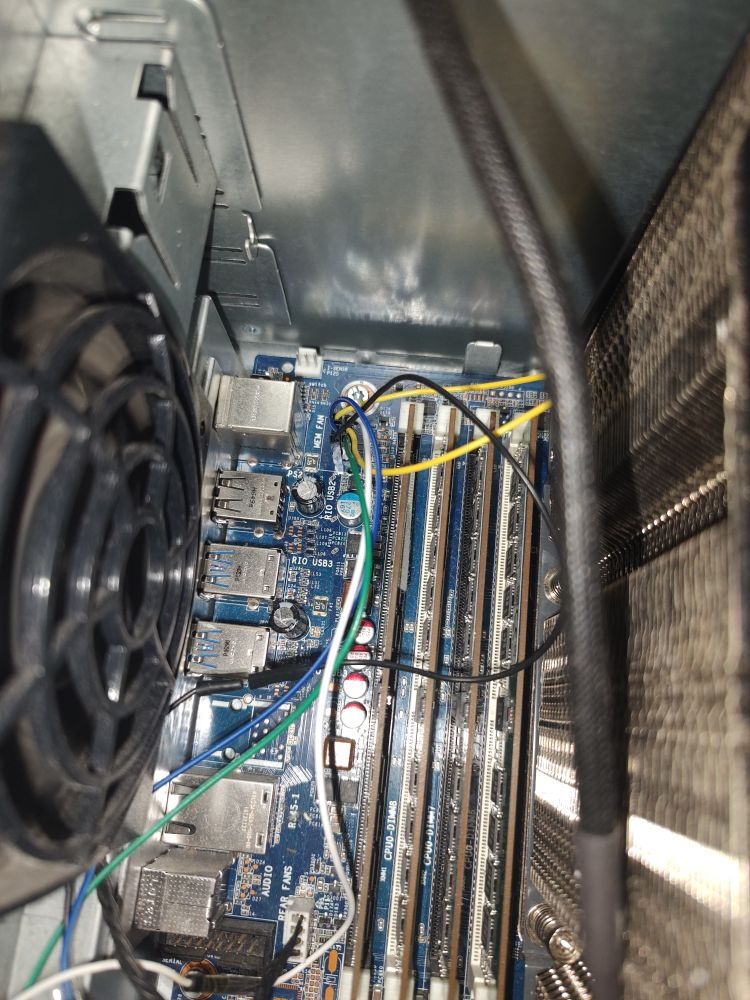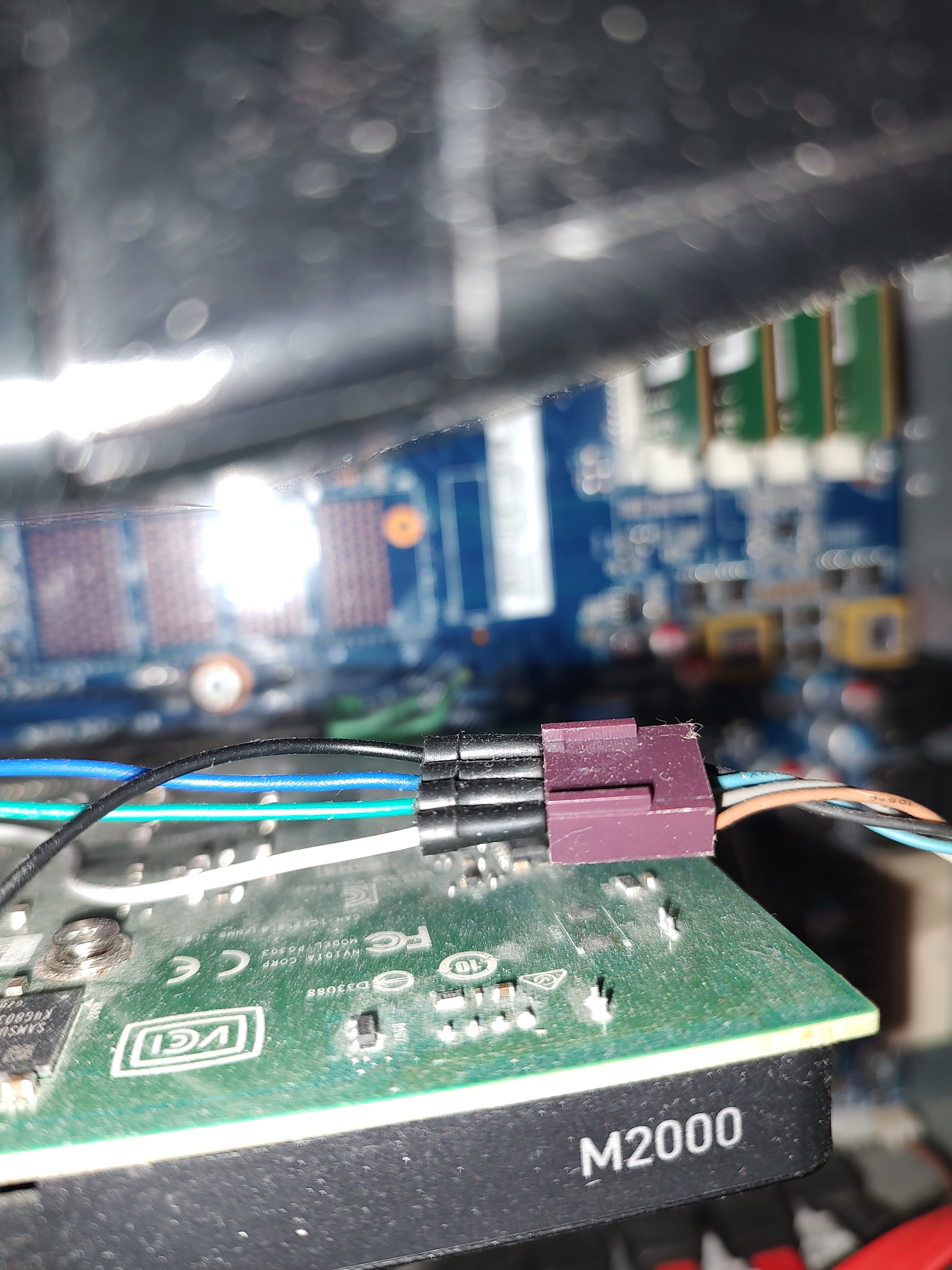

“Why are you trying to use ‘new’? Classes are so 2015! […]”
Uses new to throw error


“Why are you trying to use ‘new’? Classes are so 2015! […]”
Uses new to throw error



Soon to be neater, with the official memory fan, more drive caddys, and an extra DHCP/DNS server.
My abstractions are:


Don’t mind me using that in Uni :3


Maybe most smaller ones have hosted both things separately, e.g… with a dedicated minecraft server hoster and a common website-building+hosting service, and don’t want to run an extra server for a proxy just for this.
With bigger servers (eg. Hypixel, 2b2t) or selfhosted servers (eg. mine), everything is on the same physical (or virtual) machine anyway and therefore everything has the same address, so you wouldn’t even need a proxy.
“Unknown library” often means a rather small and sparely documented and used library tho, for me. Which means AI makes everything even worse by hallucinating.


I always found it weird for people to recommend BitWarden … it just FELT like a company that’ll go completely off track sooner or later. And it did. Oh wonder. KeePass ftw!


No, but it mentions that it times out in matrix.SyncRunner. This sounds like some kind of function to … well … sync using matrix, and I know there is at least one config option for syncing with matrix, but I can’t check rn. Maybe you need to explicitly comment it, set it to null or actually set a value?


Do you have a matrix instance set in the config?
It adds you to the wheel group - in real life
We don’t talk about Ubuntu here. He’s the black sheep of the family.


In dem Fall, der einfachheit und sicherheit halber: Einfach den https://github.com/TeamPiped/Piped-Docker.git clonen, nach Anleitung configurieren und starten.


Usually you’ll just need the official Docker. It contains the frontend, backend and proxy. Technically, you only need the backend right now. But lifting the load of the official servers by using a selfhosted frontend is probably beneficial too, with no drawbacks. However, the proxy is the thing anonymizing you - accessing youtube always through it, even on the go, will deanonymize you further (kinda, it’s still better than the official app). If you have a list of proxies you can rotate through, you would be anonymous again.
Then there are other components, that you can find through the larger config file of the main Piped-Backend or TeamPiped’s GH profile itself. But again: Stuff like RYD-proxy will only be anonymous and beneficial with a rotating IP/proxy. But https://github.com/TeamPiped/region-restriction-checker is good to selfhost, as (afaik) it will help decentralize to circumvent censorship (zB. uHrHEbErRecHTsvERletZUnG die Ratten). But in order to configure your instance to use the region-restriction-checker, you’ll need the larger and more complete config file.
ZL;NG:
https://github.com/TeamPiped/Piped-Docker reicht eigentlich. Sonst einfach die einzelnen Repos angucken, was sich gut anhört. Proxy Zeug nur selber hosten wenns nicht um Privacy geht oder die IP verschleiert wird.


I have dozens of services, and most of them start their own http server, using a regular websocket binding to localhost and a port. As most of them are web services, I run out of standard ports pretty fast - 80, 8000, 8080, and then 8069, 8070 etc. Keeping tracks is a pain. Docker just makes it worse. Also, all non-web services have standard ports - 25, 456 for smtp/smtps, which nmap identifies. In my current state, an attacker could just open a random port on my server and I couldn’t notice.
Unix sockets are basically just regular files, where http traffic is written to and read from. So eg. gitlab-puma or piped-proxy creates the file /run/gitlab/gitlab.socket respectively /run/piped/proxy.socket, and my reverse proxy (nginx) communicates through that socket with the service, just as it would through a regular websocket using localhost and a port. Except unix sockets are easily identifiable (they are named and put in dirs dependent on their service) and can be access controlled much better - instead of any service in the whole network (assuming no firewall is present on the device, usually behind a consumer grade router) being able to communicate with the service, only members of the group http (nginx) or the services’ user can read/write to the socket, assuming nginx is save and root, http and the services’ user are not compromised, not even an attacker with access to the server can read any traffic, as it’s encrypted (https) to nginx, and not readable to other users through the socket file. It’s also a bit more performant. The catch is: Very few programs support it, and many of the ones that do implement it incorrectly. Usually I would create a specific user for a service (or sysusers.conf file would), under which the service runs in systemd, and which therefore owns the socket file. The http user is then added to the group of the services user, or the file’s group is set to http. With 770 (or 660) permissions (Read and write for the user and all users in the group, including http) everything would be fine, however, they’re usually 755, so only actually writeable for the owner, and not the group, so http, which makes communication impossible. And as just creating the file with correct ownership and permissions beforehand results in the service believing the socket is already in use, I usually have to patch the actual program itself. Maybe I can do something with systemd’s PostExec etc. tho.
And piped-backends library does not support unix sockets at all - so I will need to extend the incredibly complicated library itself to get what I want. Damn.


Yes. My private Instance works perfectly, and I’m so happy that I chose to selfhost it rn lol. And currently I’m on the quest to selfhost even more piped components, eg. RYD_Proxy, sponsorblock-mirror, make them buildable as a PKGBUILD and compatible with Unix sockets: https://git.30p87.de/piped


My EVGA GTX 1070 SC Gaming ACX 3.0 Black Edition is also holding up strong, especially with AMD FSR or good games (like Metro), but 4k is really bad for the poor little guy :c
But even with my new PC, he will continue to live in my server :3


*Cries in 5 2600 and 1070*
WeChat is literally just as bad tho.